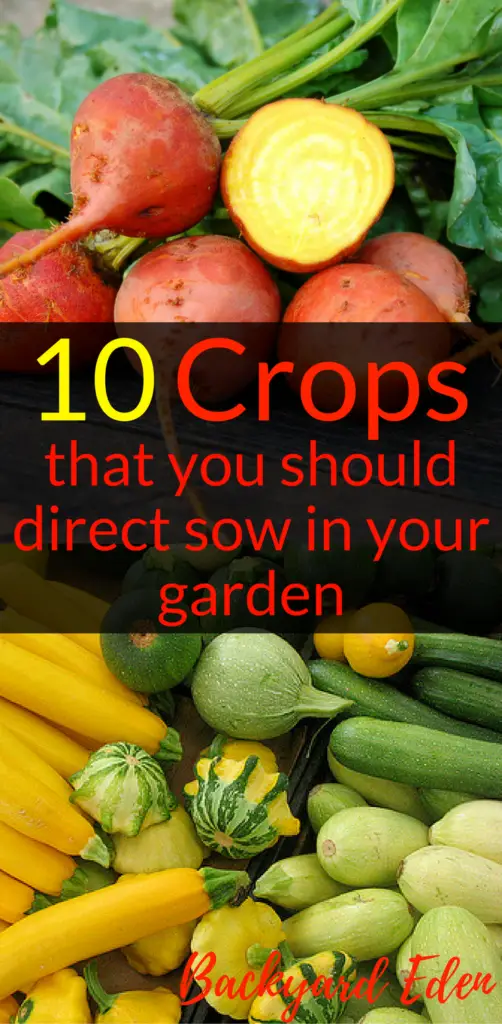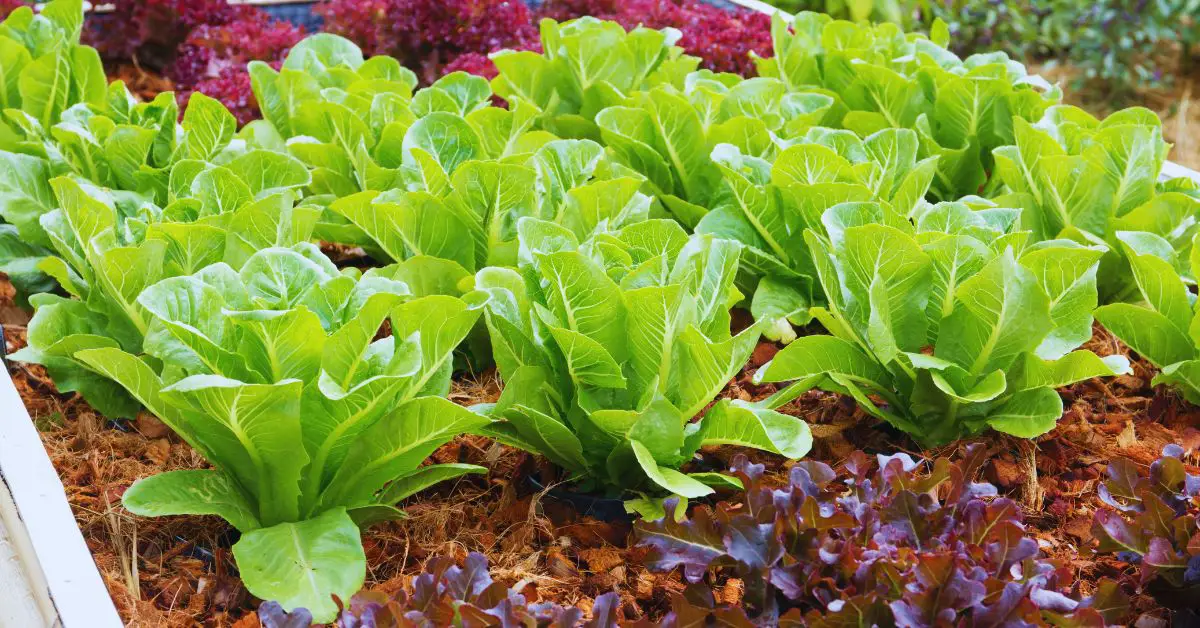Each and every year at this time, if our growing season is over we start to plan our next spring garden. I constantly hear people talking about when and how to start their seeds indoors. The thing that a lot of people do not know is that there are many different fruits and vegetables that can be planted directly into your garden after or even before the last frost.
Yes, there are some really picky vegetables that like more attention and even do better started indoors. These are tomatoes, peppers, and eggplant! They need to be started from seed indoors. Despite this, many homegrown fruits and vegetables are easy to grow when seeded directly in your garden. Here are our favorite 10 Crops that you should direct sow in your garden!
Indoors or Direct Seed
Essentially, the only criteria that separate indoors or direct seeding them is gardener preference. Even though I have compiled this list of fruits and vegetables that I like to direct sow does mean that you have to. Each one of these different crops can be successfully started indoors and transplanted into your garden with the right process. I simply choose to direct sow them because it takes less time and resources to get them growing.
10 Crops that you should direct sow in your garden
Squash and zucchini
Squash is one of everybody’s favorite plants for the garden. They can get to be large plants that look great in the garden. These big beautiful plants need to be planted at least 18 inches apart. They will be crowded even then, but, if gardening space is tight, they can live this close to each other.
Be aware that in crowded environments, getting a good harvest will require diligent pest and disease control. Squash plants tend to get overcome by squash bugs in our garden. I really dislike squash bugs. They are so nasty! I also use succession planting to get a longer harvest period.
To set in the ground, drag out rows about two inches deep, drop the seeds, then cover with dirt or compost. Fertilize once or twice as needed. Many summer squashes are bush types, but winter squash and pumpkins are sprawling vines so provide lots of space accordingly.
Cucumbers
Cucumbers are a climbing vine and grow up any trellis, very nicely. They are easy to grow, love the sun, and there are a ton of varieties! Try something different like the lemon cucumber which looks like a lemon or a long Japanese type. For us, cucumbers are great to have in the garden for fresh eating. Eating a cool cucumber in the shade is always refreshing when you’ve been working in the heat.
Watermelons
Watermelons are one of my favorite things about summer! Every summer we wait for what seems like forever before the watermelons are ready to harvest! In the south, watermelons are easy to grow because they love the heat, but in cooler climates, it may be more difficult because of their long time to harvest.
Give them 3-4 months to mature and at least six feet between plants as the vines are very large and will take over your yard. I like to plant watermelon plants around the perimeter of my garden so that they can vine out into the yard.
Some gardeners recommend pinching off all but one or two flowers to make larger, sweeter fruit. We usually let them grow because we are greedy and want to eat all the watermelons. You do how you like to do.
Okra
Okra is one of the absolute best things to plant in your summer garden. I like to plant in two different sowings, one in the early spring before it gets hot and then another planting in late May. Okra loves the hot weather! When you plant your okra, check your seed pack for spacing, some okra plants are over 10 feet tall whereas others are only 3. I have also had great success growing okra in containers.
Okra is one of the few veggies that will live all summer long and keep producing until frost in hot, humid conditions. Once these babies start producing, you are going to be picking okra every day!
Early in the season, larger okra pods can be harvested. However, as it gets hotter, they become woody as they grow so harvest them young. When they get over-ripe, they are fibrous and inedible. We let the woody pods go on the stalk and harvest them for seed at the end of summer.
Beans
There are two types of bean plants: bush beans and pole beans. Bush beans are smaller and grow like bushes. Pole beans are vines and best grown on a trellis or support of some kind as the vines can get 8 or more feet long.
Traditional green beans are harvested while the pods are still young. Soup beans are harvested after the pods are matured and dried. Check your seed packs for specific information on your variety.
We like to plant both bush and pole beans. For classic green bean flavor, pick contender bush beans. We also like Top Crop for easy picking. Pole beans are later to develop than bush beans, and they keep on giving after the bush beans tire out. Try the heirloom Rattlesnake for pretty speckled beans or Asian Yard Long beans for a bountiful harvest.
Cool Season Crops
Carrots
Carrots can be sown out up to a month before your last frost and actually taste much better when grown through a couple of frosts. The light frosts actually make carrots sweeter.
We grow ours in raised beds where we can control the soil since our soil is mostly clay. For nice big carrots, clear the growing area of stones and till deeply to ensure healthy roots. Amend the growing area with compost before planting. They are ready to harvest about three months after planting, but a fall crop can be left in the ground over winter as long as the ground does not freeze.
Related: How to grow Carrots and How to amend clay soil
Beets
Beets are another great choice for direct sowing into your garden. They do best in cooler temps, so spring and fall are the produce the best crops. Start them as soon as you can work the soil after winter. Beets are super cool to grow with kids, too, because there are so many beautiful colors!
For root crops, don’t apply heavy nitrogen-based fertilizers. Give them more phosphorous to get bigger bulbs. All parts of the beet are edible fresh or cooked. Beet greens are quite delicious, but pickled beets are one of my favorites!
Swiss Chard
Chard is another amazing vegetable plant to grow in your garden. It produces abundantly! You will have fresh greens to pick for months. Swiss Chard can be used in a variety of ways. The larger leaves are great in soups and cooked down like spinach. The stalks are great pickled!
Turnips
Growing turnips is very satisfying. Grown in early spring and in fall, they come up quickly and grow like weeds! They like cool weather and should be harvested young. I like the classic bicolored purple top turnips and the Japanese salad turnips in our garden. We plant them for the greens so we sow them very close together. Thin them out to 4 inches between plants for bigger bulbs.
Radishes
Radishes are another satisfying crop in the garden. They are fast-growing, and we love their bright color! Their peppery flavor is nice pickled or sliced thinly in a salad, but I recently learned that cooked radishes are amazing! They are cooked in a pan with butter (who doesn’t love some butter?), onions, and fresh garlic.
Related: How to grow radishes
If you like this article on the 10 Crops that you should direct sow in your garden, please share it on social media and with friends. For all the latest recipes, container gardening tips, and growing guides subscribe to our newsletter in the sidebar.
Also, check out our article on What is succession planting? or How to grow Carrots!
Be sure to Like us on Facebook and follow us on Instagram, Twitter, and Pinterest!






